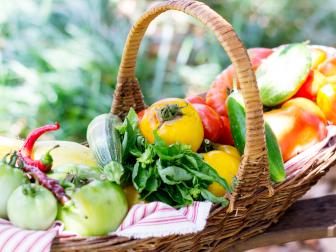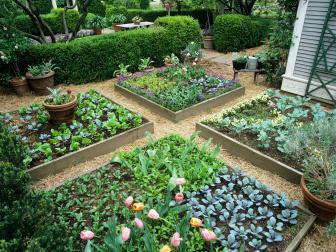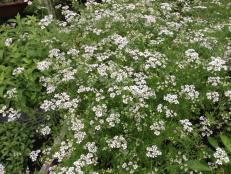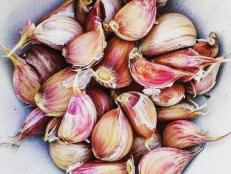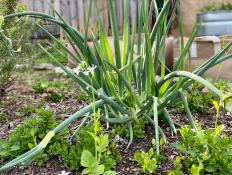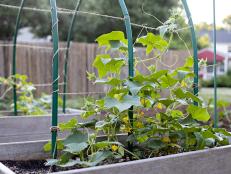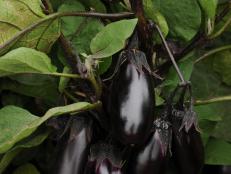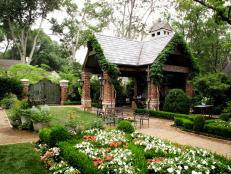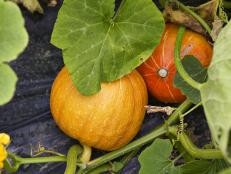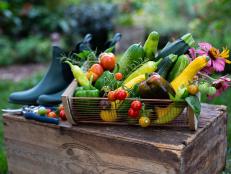How to Plan a Vegetable Garden
HGTV can make vegetable garden planning less intimidating with tips on garden design and suggestions on how to choose vegetables to grow.

Photo by Melissa Caughey
This vegetable garden is edged with flowering annuals. This helps to attract pollinators. The Florida themed garden features the top yielding produce grown in Florida including sweet corn, broccoli, bell peppers, tomatoes and squash.
Vegetable gardening is a rewarding and surprisingly easy activity. Like anything else, vegetable garden planning can be intimidating. But, if you follow your plan step by step, before you know it you'll be chomping on your own best-ever green beans (or tomato, or pepper, or zucchini).
Vegetable Gardening for Beginners: 16 Tips and Tricks 17 Photos
Even if you've never planted a vegetable garden before, follow our HGTV garden experts' tips and you'll be planting a bumper crop of tomatoes, peppers and lettuce before you know it.
Step 1: Decide What Vegetables to Plant
Here are a few basic questions to get you started.
What will grow well?
Where you live can help you narrow down your options. The USDA Hardiness Zone Map is one guideline, but other factors like soil type and weather patterns will also affect your region's perfect produce. Your local agricultural extension, nursery owners, and gardeners in your community can all be rich resources as you determine what to grow. People love to talk about their gardens, so don't be afraid to reach out.
Also consider your specific yard. Many veggie plants need six to eight hours of direct sunlight to thrive. If your yard is less sunny, you might want to go with shade-tolerant plants like salad greens, broccoli or peas.
What will you eat?
The veggies you already eat a lot of make logical choices for your home vegetable garden. Also, consider the costs and availability of specific vegetables: If you know you can buy plenty of organic spinach dirt-cheap from the farm stand down the street, you might skip growing it in favor of something more expensive or harder to come by.
Keep in mind that it's a lot less overwhelming to start with a few veggies the first time, then add more as you gain confidence and skills.
How much time can you give?
Some plants are very forgiving of busy (or lazy) gardeners, while others need closer care and almost immediate harvesting to stay healthy and keep producing. Lettuce, green beans and zucchini are three examples of veggies with a reputation for being novice-friendly. Tomatoes, while often at the top of new gardeners' lists, can actually be quite tricky as they're susceptible to many pest and diseases.
Gardening is part art and part science, so the above guidelines are more suggestions than "rules." Expect some trial and error as you figure out which veggies are just right for your particular garden. Experimenting is part of the fun.
Start From Seed or Seedling
Once you've figured out which veggies you want to plant, you'll have to determine when to get started. In large part this will depend on whether you plan to start from seed indoors, sow seeds directly in the ground, or start from seedlings purchased at a nursery.
Where to Buy Vegetable Plants Online
It's perfectly acceptable to grow many veggies and herbs from transplants instead of seed, and you can even order some online.
Consider the following:
How long is your growing season?
Some plants need several months to mature. If you live in an area that doesn't really warm up until May or June, you won't have a long enough growing season to grow slow-maturing plants like tomatoes if you sow the seeds directly.
Does the vegetable transplant well?
Some veggies, like peppers and broccoli, can be easily moved from inside your house to the ground, but others, like carrots, peas and lettuce do not withstand transplanting well, so seeds are generally directly sowed into the ground.
If the veggies you want to grow transplant well and need a longer growing season than your climate provides, you'll want to either start your seeds indoors or purchase seedlings to plant.
A few things to keep in mind:
- Starting from seed is the more economical option, and seed catalogs offer a dizzying array of options. However, starting from seed requires an investment of time and supplies (like adequate lighting) to ensure healthy plants. Plus, you'll need to get started soon.
- Purchasing seedlings from a nursery is an easier option, and you'll be able to pick and choose healthy plants and then put them in the ground soon after. Local growers may also grow varieties well suited to your climate. But buying plants is more expensive, and you'll have fewer options than if you started your own seeds.
- Some plants don't start from seed at all, but are grown from roots. This article explains how to plant bare-root vegetables including asparagus and rhubarb.
Sowing seeds directly
If the veggies you want to grow have a short enough growing period for your climate and don't transplant well, sowing seeds directly into the ground is your best bet. Some vegetables grow very quickly — just 30 days from seed to table.
Start thinking about which option or options make the most sense for your garden. Remember that the easier you make your first gardening experience, the more likely you are to stick with it later. Keep it simple!
Find a Garden Location
How much space you have in your garden matters a lot less than where the space is … and what you do with it.
Once you've determined which veggies you want to plant, you'll need to figure out where to put them. Where your garden will grow best will depend on a several factors:
- Space. You don't need a lot of space to grow a successful veggie garden, but research the space needs of the veggies you've chosen to determine how large an area you'll need to produce enough to harvest.
- Sunlight. Is there an area of your yard that gets six to eight hours of sunlight each day? That's probably your ideal garden plot, unless you're growing mostly shade-loving veggies.
- Soil. Before you plant, you'll want to test your soil's pH, nutrient, and moisture levels. If your soil doesn't drain well or you worry it might be contaminated, building raised beds might be your best bet.
- Comfort. If you have physical problems that make stooping, bending and crouching difficult, keep that in mind while choosing your space. Many gardeners love raised beds because they can be much more comfortable to tend.
- Ease of Access. Planting near your hose or sink makes it easier to keep your garden well-watered. Choosing a spot near your house makes it quicker to run out and grab a couple tomatoes while you're getting dinner on the stove. If you have small children, consider a space in the yard where you can easily keep an eye on them while tending the garden. Don't underestimate the power of a convenient location for your garden.
Now that you know where you'll put your garden, the next step is designing and creating your plot.
Vegetable Garden Design
When you picture a vegetable garden, you probably envision neat rows of plants — but that might not be the best garden design for you.
Here are some options to consider when designing your garden and deciding on a vegetable garden layout.
Row gardening
This is the traditional garden planted in rows, with space between to allow the gardener access to the plants. Row gardening is a good choice for large gardens as it can make weeding easier. But, it can use up precious space in a small yard. Planting herbs among the vegetable rows is one way to make better use of space.
Intensive gardening
Intensive gardening allows you to get the most possible harvest from your garden. It's popular among gardeners with small yards and may include the use of trellises, raised beds and succession planting — replacing spent plants with new — to eke the most possible use out of your plot. Square-foot gardening is one extremely popular and simplified method of intensive gardening.
Container gardening
If you have a very small yard or no yard at all, growing vegetables in containers might be your best bet. Whether you build your garden in pots, boxes or a mix of the two, container garden offers tons of flexibility, a manageable space and plenty of opportunities to get creative.
Spot gardening
Some yards don't offer enough space all in one place for a garden, but may boast several small areas where you can grow a vegetable or two. When you're short on space, sometimes you have to take advantage of every sunny spot you've got! Consider intermingling flowers or decorative herbs among the veggies for a more intentional, complete look.
Raised bed gardening
Elevated planting areas — filled with your preferred soil — offer plenty of advantages including efficient drainage and some flexibility on garden location, and can even be easier on backs and knees due to less bending and stooping while tending. Also, soil warms earlier in a raised bed garden in spring, so you can start planting sooner.
20 Raised Garden Bed Ideas 26 Photos
Discover different types of raised garden bed styles and flower bed styles that will inspire you to create your own orderly garden space.
When deciding which plants to put next to one another, consider companion planting. Based on their harvest timetables and need for sunlight, nutrients and water, some veggies naturally "get along" as neighbors. Classic pairings include carrots and tomatoes, and onions and cabbages.
Planning your garden design doesn't have to be complicated — all it takes is a piece of graph paper and a pencil! If you want to get really nerdy, there are computer programs that can help. But the most important ingredient is knowledge — take a few minutes to research each veggie you'll be planting to make sure you're putting it in the best spot.
The real fun is about to begin.






